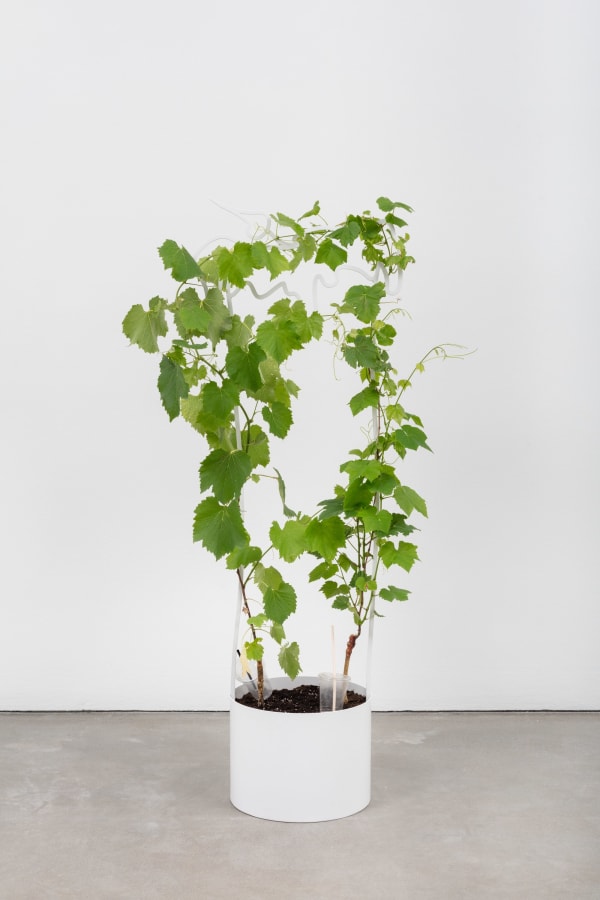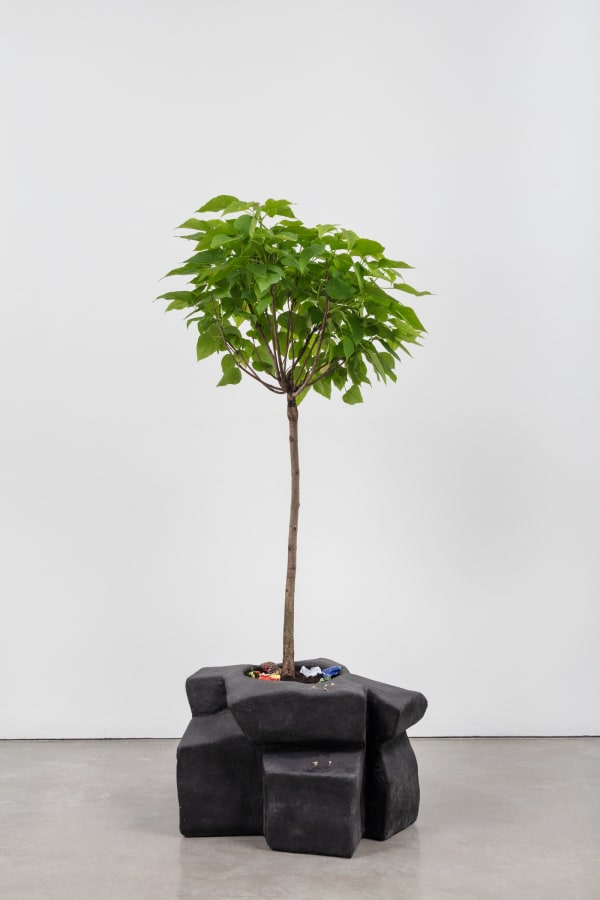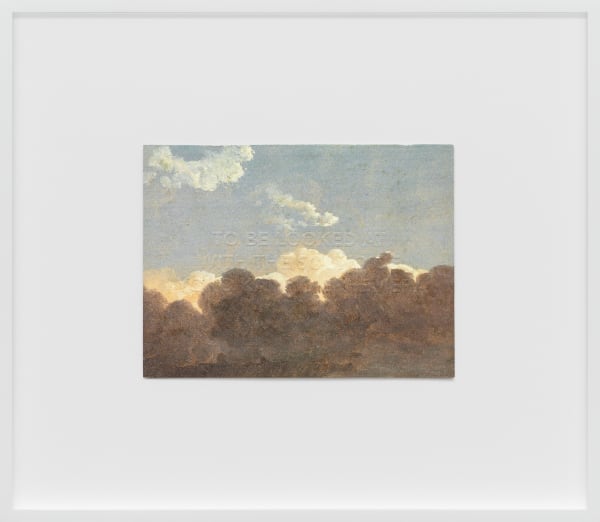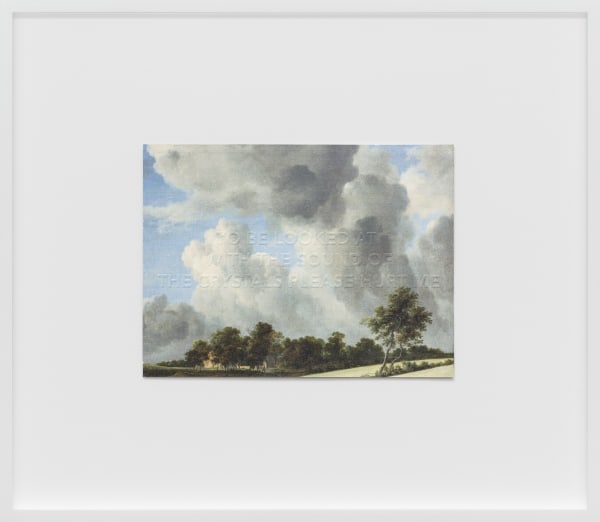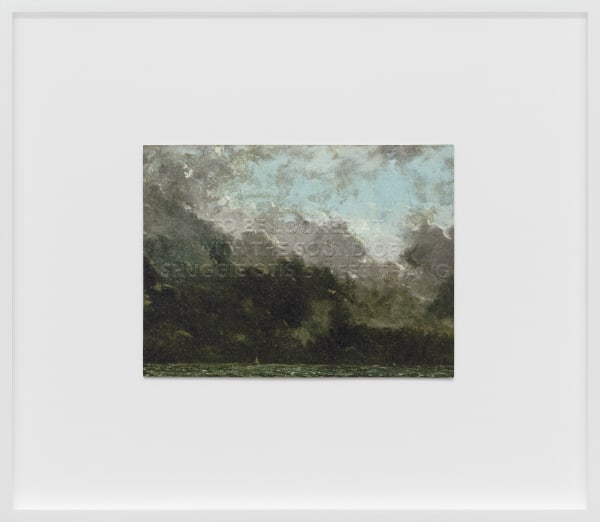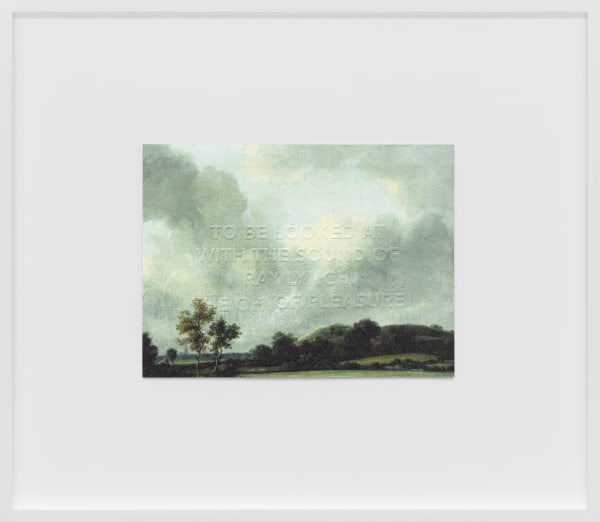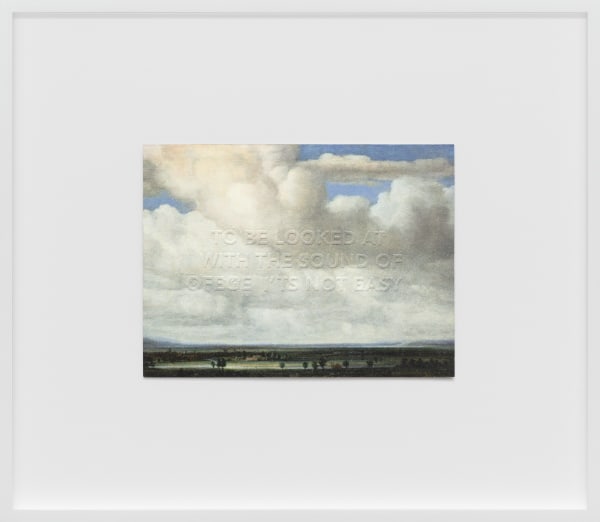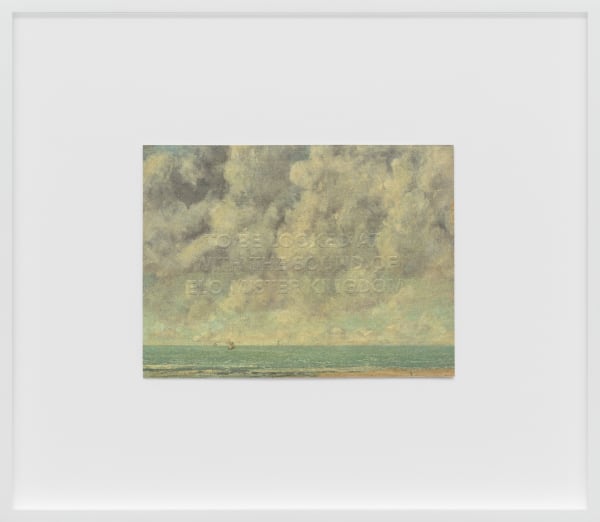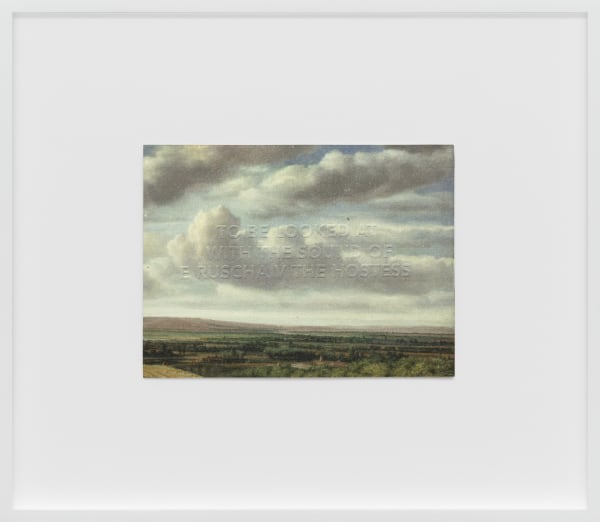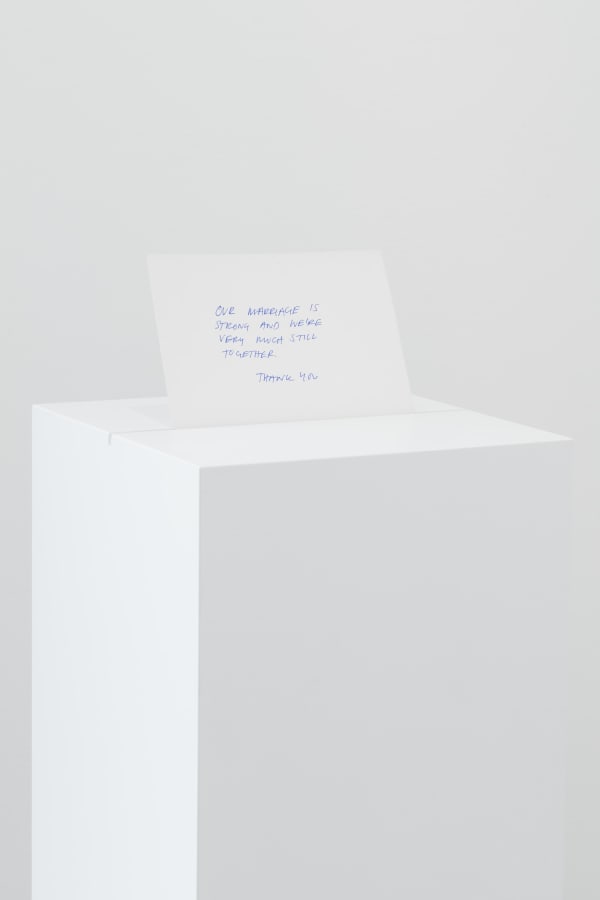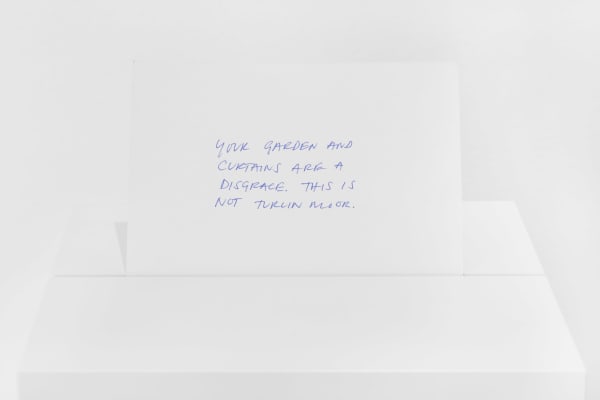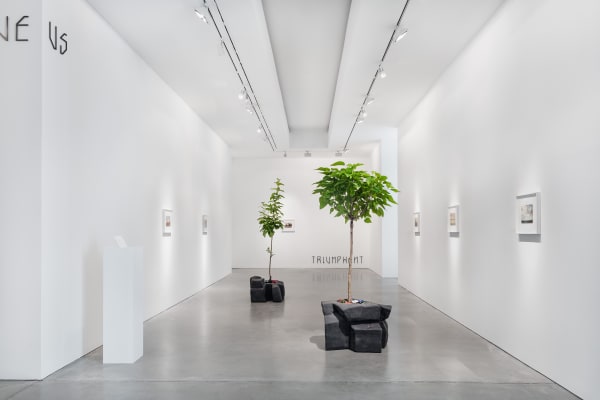LISTEN TO ME, LITTLE PIG!: MARIA LOBODA
-
介绍
Maria Loboda’s exhibition Listen to me, little pig! at Galerie Thomas Schulte explores the failures, double meanings, and misinterpretations in the communications between man and nature. With characteristic wit and irony, the artist transforms the space: a series of prints of pastoral landscape paintings bear palpable suggestions for ambient soundtracks and form the almost panoramic backdrop of Loboda’s fragmented gardenscape. Here, among fruit trees growing out of brutalist sculptures and candle-shaped overgrown metal trellises, carefully selected and manipulated hints and quotes from literature, music, and art history have been planted by the artist for visitors to mingle with and be seduced by.
Maria Loboda’s title for the exhibition Listen to me, little pig! is inspired by a fragment of a medieval Welsh poem. It evokes the myth of Myrrdin Wylt, a prophet, madman, and a wizard who is said to have lived in the 6th century and who would later rise to fame as the fictional figure of Merlin, the wizard and enchanter. Legend has it that having witnessed the horrors of war, Myrddin fled civilization and went into the forest, where he lived and talked to apple trees and pigs until he received the gift of prophecy. Loboda has set the scene for an encounter with the lingering presence of the old shape-shifter.
Lining the walls of the exhibition space like a panorama, Loboda presents a series of pigment prints. The motifs of the ten small prints are taken from photographs of 18th to 20th century landscape paintings that are in the public domain of the Metropolitan Museum of Art. Each of the prints has been embossed with text in bold capital letters. While the first line spells out the title of the work TO BE LOOKED AT the third line names the title of a song or piece of music, which Loboda suggests as the individual soundtrack to each of the romantic, dramatic, or pastoral landscapes. The music Loboda has selected and evokes to resound inside in the heads of visitors ranges from extreme ambient, doom, or noise music mixed with love songs. The landscape may first look genteel, but it is looked at through the veil of a vast range of human emotions.
Placed on the ground and cutting through the space are the three black abstract sculptures with the title THE ARBORICULTURALISTS. From each of the sculptures grows a different fruit tree. With their abstract, obtuse and bulky presence and grainy dark texture, they resemble meteorite rocks that have fallen from the sky. On closer inspection, each of the sculptures is adorned with small objects that are carefully assembled like jewels. They are pieces of garbage, colorful glossy wrapping papers and bang snaps—are they the remnants of a hedonistic picnic?
Maybe the two hand-written notes left in Loboda’s orchard offer some clues? The two ready-mades are titled C.F.M. SMILES AS SHE PICKS HYDRANGEAS AMIDST HER HUSBANDS SEX SCANDAL and D.D. SMIRKS AS HE LEAVES A NOTE IN A NEGLECTED SHRUB. They make reference to photos in the yellow press showing the original messages that had been purposefully placed in a garden.
In many respects the counterpart to the three tree sculptures and the second component of Loboda’s gardenscape, is the work TRELLIS, TRELLIS BURNING BRIGHT. The two figurative metal sculptures painted in white take the shape of the outlines of two burning candles. The taller candle is almost human-size and overgrown by a tendril of wine, the other looks as if it has burnt for longer and has already shrunken. It is entwined by a kiwi plant. The title of the work is a play on the first lines of a poem by William Blake (1757–1827): “Tyger Tyger, burning bright, in the forests of the night; what immortal hand or eye, could frame thy fearful symmetry?” In Blake’s poem, the lyrical “I” speaks to a tiger to inquire about the animal’s creation and to contemplate the duality between aesthetic beauty and primal ferocity.
The final piece in the exhibition is LOVE CONQUERS ALL, a sculpture, a riddle, and a rebus created by Loboda based on an ancient case of mistaken identity. Across the walls, the sentence “Lucifer above us triumphant” is spelled out in large capital black metal letters. The first three words are placed high above the heads of visitors like a frieze. The last word, “triumphant,” however, seems to have plummeted to the bottom of the wall. With this gesture, Loboda makes reference to the fallen angel who Lucifer became when his name was absorbed into Christian folklore and became synonymous with the devil and Satan. Prior to this, Lucifer—from Latin the Light-Bringer—had been the name of various figures in different mythologies and was associated with the planet Venus. As one of the brightest objects in the sky the planet is named after the Roman goddess of love and beauty and has been made sacred to the gods of many cultures.
LOVE CONQUERS ALL also alludes to the famous puzzle by Gottlob Frege (1848–1925), in which the philosopher used the terms “evening star” and “morning star” to illustrate his distinction between sense and reference. While Venus is the reference of both, the “evening star” describes a different quality than the “morning star”. During its cycle, Venus changes its position in relation to the sun: it first rises before the sun, then for several weeks it disappears behind it to then reappear and rise in the evening. Because of this, it had long been believed that Venus was two different celestial bodies. And even when the identity of the planet had become apparent to astronomers, the separation into two mythological beings was long maintained. They are two sides of the same coin and remain a semantic puzzle just like—as Loboda claims—Lucifer can be Venus—the goddess of love—and, vice versa, love can be the devil.
Listen to me, little pig! is a soliloquy by Maria Loboda in and with nature. It is also a fable. It is an exhibition about story-telling and about the fact that isolation bears mythologies and about realities you cannot see—an exhibition about madness and wisdom, love and hate.
-
作品
-
安装图示
-
Inquire about works by Maria Loboda

-
视频
-
参展艺术家



